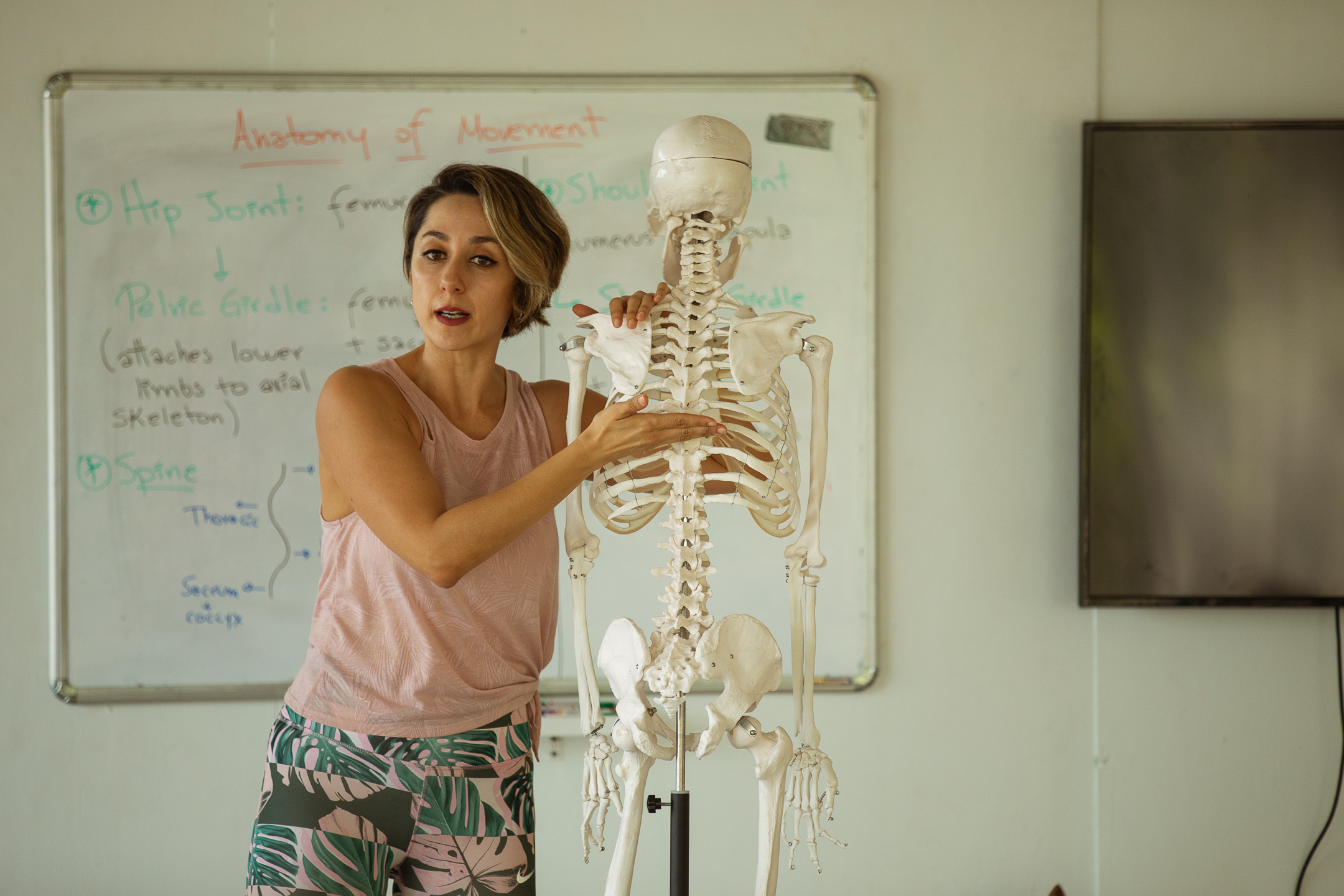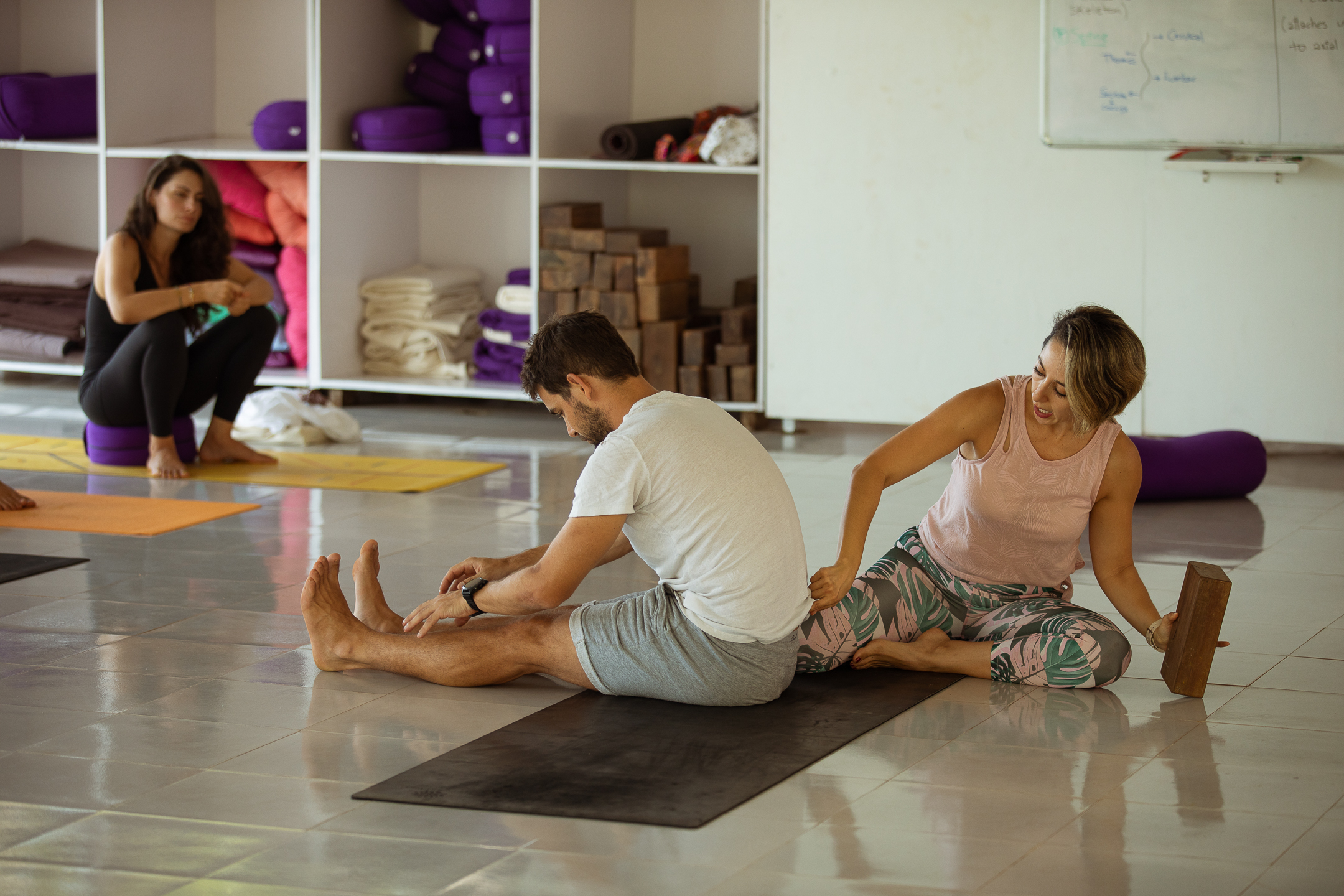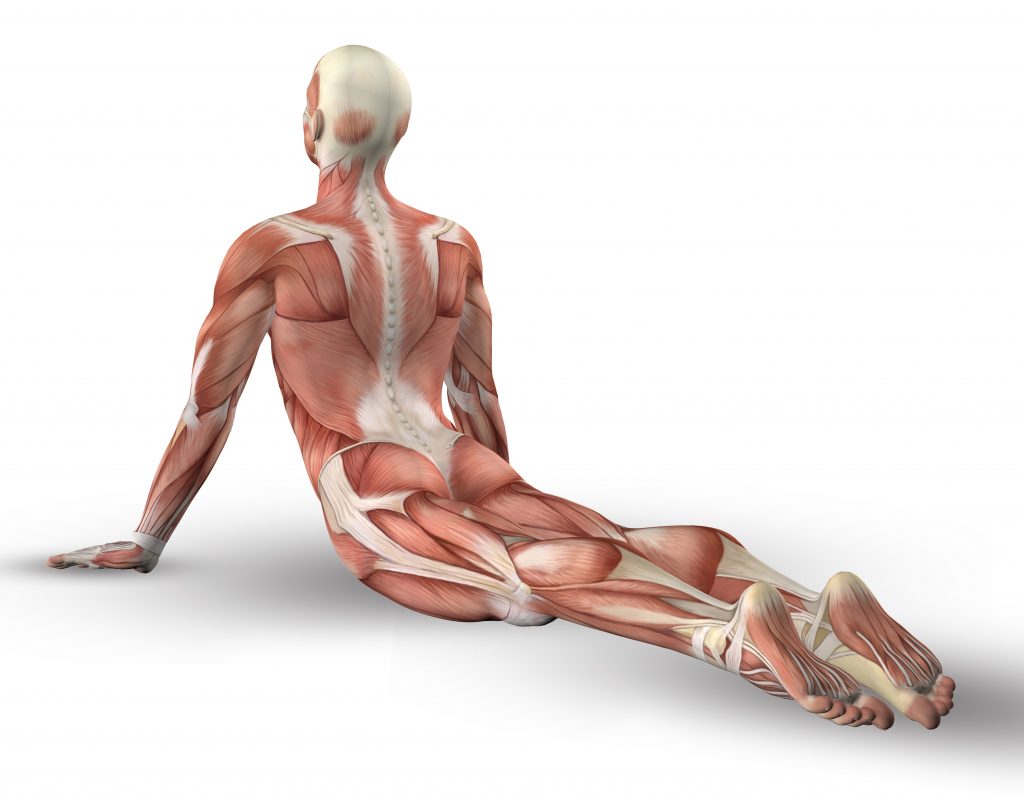What is Yoga Anatomy?
What is yoga anatomy? Why is it important to have an understanding of functional anatomy? What does a yoga anatomy course consist of? Do these questions sound familiar? As yoga teachers, a basic understanding of yoga anatomy is critical to teaching students in an effective and injury-free manner. It is very helpful in understanding a student’s progress, where one needs support, and what is too much or too little.
The term anatomy refers to the field of biological science and includes the study of organs, systems, and structures in the body. The subject looks at each part of the body as a separate region and deep dives into how it functions. Yoga anatomy is not very different. It consists of the science of anatomy from the lens of yoga asanas.

What should you know about yoga anatomy?
As yoga teachers, learning about yoga anatomy might be overwhelming, especially if one is not from a science background. The good news is you’re not here to earn a master’s degree. Learning yoga anatomy is a process and you don’t need to know everything from the get-go. Too much information will end up confusing you. A good yoga anatomy course is normally well-structured into different modules providing information in an understandable, adaptable and sequential manner.
Know the basics: Understanding yoga anatomy starts with the basics. Every individual’s anatomy is different. Every individual has a different structure (tall, short, broad shoulders, short legs, narrow waist, etc.). So when practicing yoga asanas, postures and alignment might look different for each person. For example, in the seated forward bend, for one person the forehead might reach the knees, but for a person with a shorter torso, the forehead might only reach the thighs, despite great flexibility. Similarly, in the Eagle Pose, one person might find it harder to intertwine the legs, while another person who has long and slender legs will find it easier.

Understanding the skeleton system: Did you know the human body is made up of about 206 bones? And, approximately 53 bones are in the hands and feet? Knowing about the skeletal system improves one’s understanding of how these bones support the muscular system and various movements. The most important of these is the skull, spine and ribcage. They make up the axial skeleton, and form a base for our more mobile limbs.
While doing yoga postures, movement in the axial system is in the spine and ribcage. The spine itself is divided into four sections, the cervical spine (neck), thoracic spine (upper back), lumbar spine (lower back), and sacrum and coccyx. During yoga asanas, the four regions of the spine work together to produce the required movement. Many backbends work on different parts of the spine. So when guiding students through the Wheel Pose, for example, being able to tell students that all the spinal muscles, starting from the external rotators and erector spinae, are engaged to keep the upper arms externally rotated is more impactful than saying the Wheel Pose strengthens the entire spine.
Joints and muscles: In Sampoorna Yoga’s online courses we teach students about the different joints, and muscles and how they function. The mobility of joints affects one’s movement and range of motion. This means one person might have more variability in hip-opening asanas as opposed to another. So, a basic understanding of the different elements in the human body and how this varies in each person is the first part of yoga anatomy.
Joints are critical to movements in the body. A lubricating fluid, called synovial fluid, keeps the joints strong and healthy. Yoga asanas are an effective way to ensure the fluid continues to facilitate smooth movement. Joints are also held together with connective tissue, like ligaments. The practice of yin yoga is an effective way to strengthen and nourish the connective tissue. A yoga anatomy course also explores the different types of joints such as hinge, ball and socket, etc.
Muscles, on the other hand, count to over 600 in the human body. Don’t worry, it is not necessary to know all of them. However, knowing which ones are voluntary and involuntary, like muscles in the heart, are useful. Some muscles, like those used in breathing, are both voluntary and involuntary. In yoga postures, muscles get contracted, expanded, flexed, and twisted. Many students might ask teachers what the effect a particular asana is having on the targeted muscles. A functional yoga anatomy course equips teachers with this knowledge.

Injury prevention: This is the most important aspect of learning yoga anatomy. If one tries to teach without knowing the right movement, it could lead to injuries. Pelvic stability and joint mobility, knowing good pain vs bad pain and knowing when to stop and release a posture are important cues. For example, with the spine, one must know how much to curve the back, how far to bend and when to stop. Listening to the body for unusual signs will prevent excess pressure on the nerves, muscles and tissues.
Concluding thoughts
Yoga anatomy is a deep subject. However, knowing the basics and progressively learning more is helpful for teachers -and for practitioners- to know the importance of warm-ups, natural alignment of individuals, the use of variations, as well as the importance of rest. Knowing a foundation of the workings of these systems and the framework allows one to understand what is common and what is unique to each body. Irrespective of each practitioner’s challenges, strengths and weaknesses, teachers can identify, encourage and guide students in a safe and progressive manner. At the same time, the practice is more meaningful and impactful for practitioners when they understand what is happening in their body during a posture.
Contact us if you are interested in learning more about the functional anatomy and discover how it can make you a better yoga teacher. At Sampoorna Yoga Online Academy, you will find specialized help focusing on your well-being and expanding your knowledge of yoga, no matter where you are.


